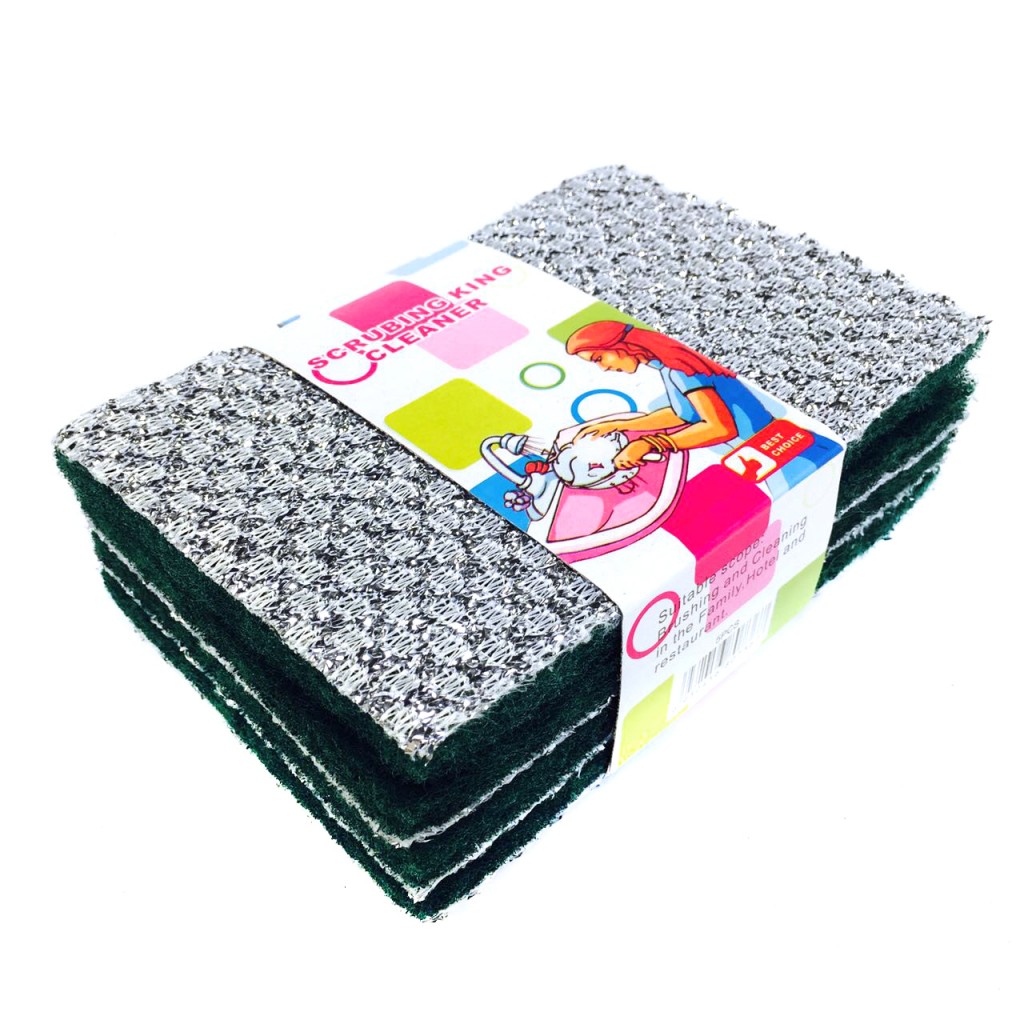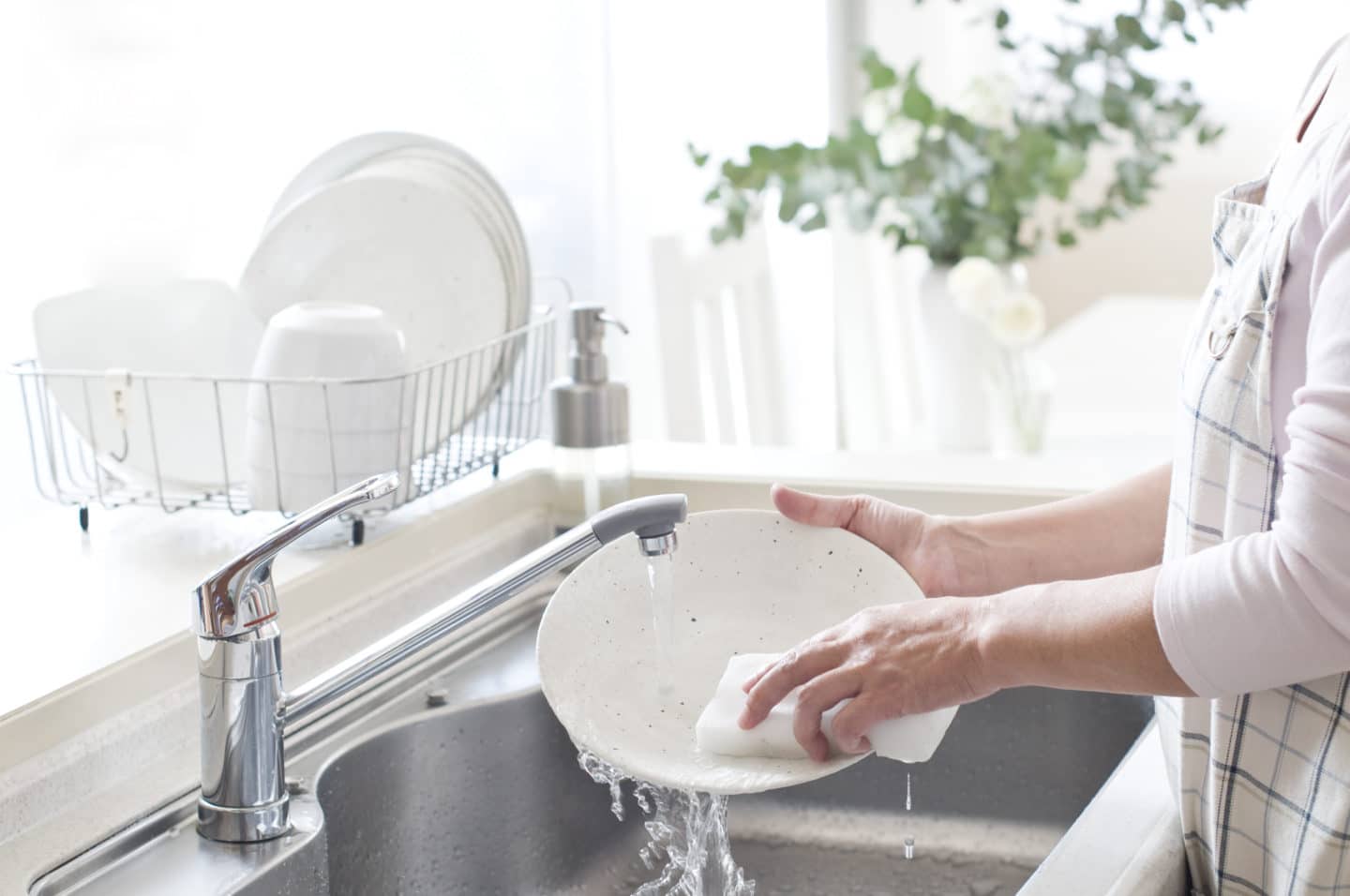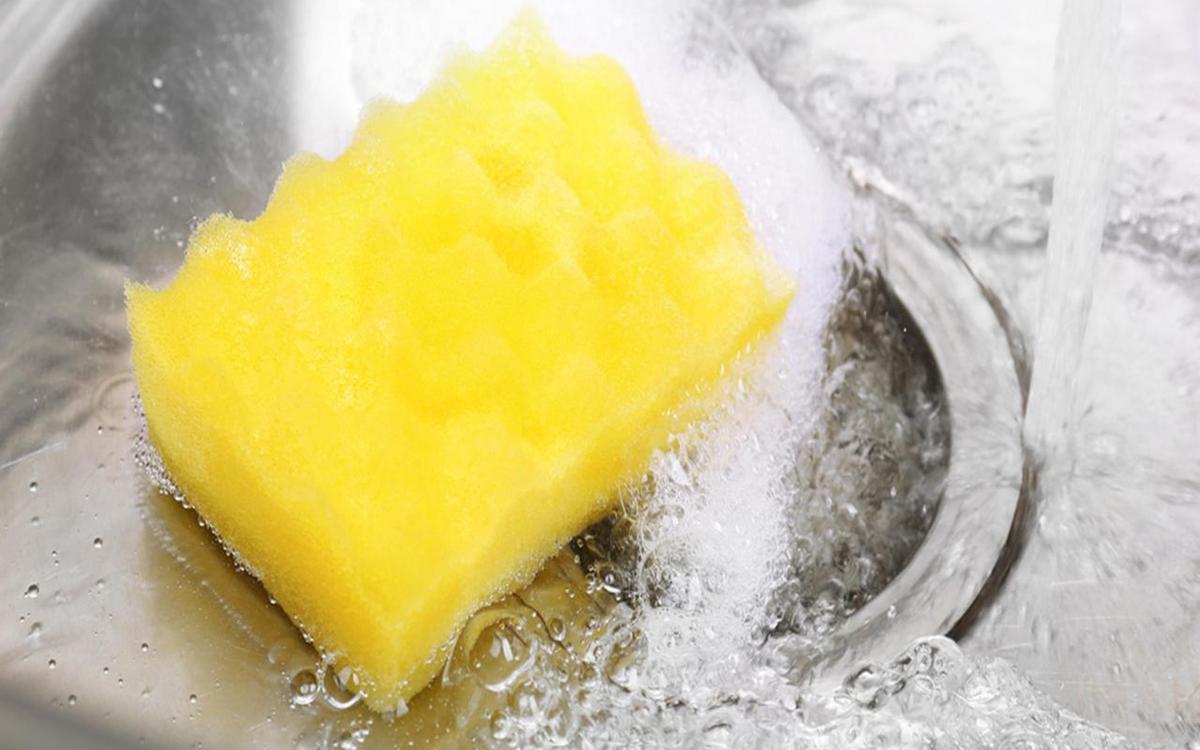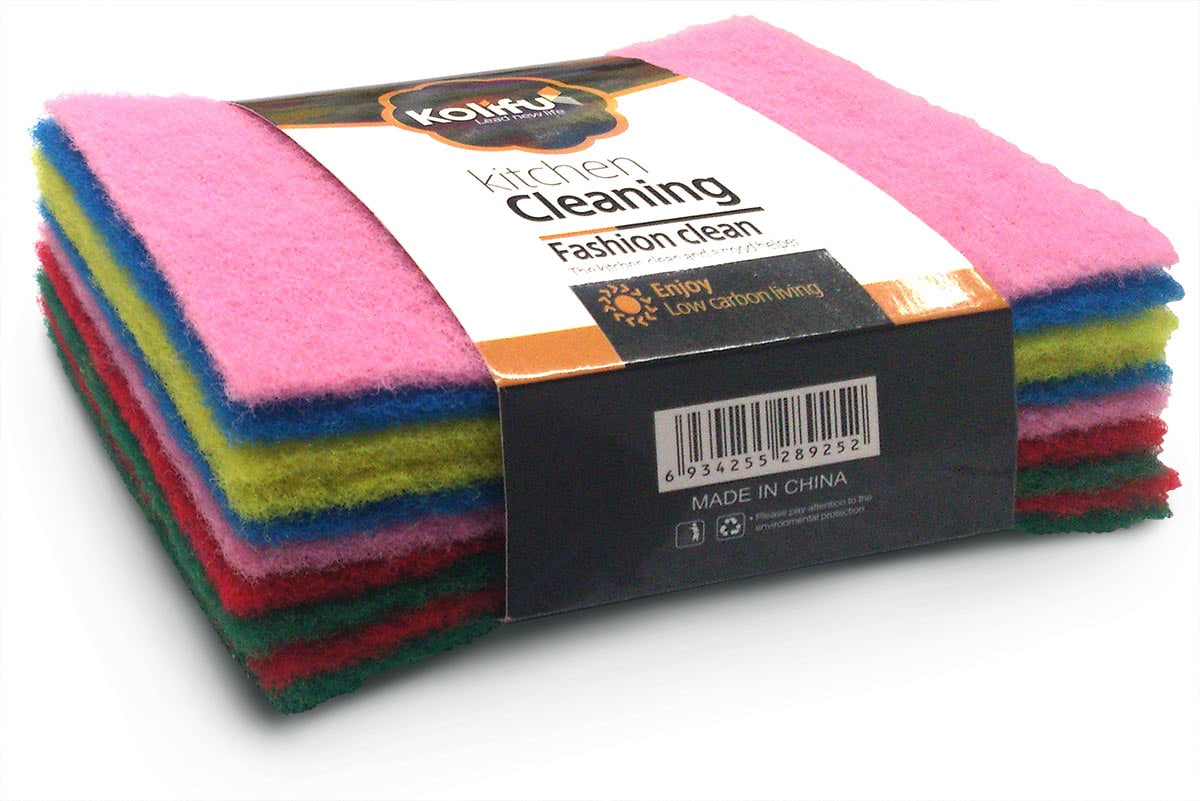Dishwashing sponges
The quality of health depends on compliance with all sanitary and hygienic standards. Yes, in the end, it is unpleasant to drink tea from a cup, which has traces of the previous drink on the walls.

Washing away dirt with a good dishwashing gel or powder is not enough, you still need to arm yourself with a good tool in this daily struggle.
- Sponge making technology
- What is a dish sponge made of
- What are the sizes and shapes of sponges
- Varieties of sponges by material
- How to choose the right dish sponge
- What is a special sponge
- How to store a sponge
- How to make a sponge with your own hands
- Than washing dishes instead of a sponge
- Video: how to choose a dishwashing sponge
Sponge manufacturing technology
At first glance, there is nothing easier than making a foam sponge. But in fact, this is a long process with its own production stages.

- A special machine is used, a roll of fiber is put on it, tucked into the unwinder.
- A special hot melt adhesive is applied perpendicular to the movement of the fiber.
- The above look is guided with flexible polyurethane foam.
- Followed by feed under the roller press. The process ends by cutting off a part of the fiber with a joint strip.
- After the press with rollers, sheets of foam rubber and fiber fall under the next press - pneumatic.
- Complete everything with polymerization. The duration of the process is 24 hours.

The quality of the sponge obtained at the exit depends on two components: glue and equipment, so that at the moment of moisture ingress, the sponge does not delaminate.
What is a dish sponge made of
Sponge manufacturing facilities offer a wide range of products. They are made from:
- polyurethane foam or foam rubber;
- cellulose;
- ecological materials;
- microfiber (polyester fibers)
- bamboo.

Each of the types has its own purpose, its service life and its own storage and use conditions.
What are the sizes and shapes of sponges
The creators manage to produce various types of sponges: round, oval, rectangular. The most popular was the rectangular washcloths. They are the most comfortable to use. Usability depends on how the material fits in your hand.
If it is smaller than the size of your palm, it will be inconvenient to use, but its cost will be much lower. If the sponge is larger than the palm, the process will be more pleasant and faster. And the cost increases in this case.

Some manufacturers have created sponges on a plastic handle. Such a device will be appreciated by everyone, especially when washing narrow and hard-to-reach objects: bottles, cups.
Varieties of sponges by material
Production includes a large number of different materials for washing dishes and kitchen surfaces. Each of the materials is good, but it is worth considering the features so as not to harm.
- Abrasive sponge. Hard or abrasive sponges do a good job of cleaning up dirt that pure foam can't handle. They have one part made of foam and the other abrasive. Or they are made entirely of rigid material, such as metallic materials.
- Foam sponge. Most common use case.It has a big disadvantage in that it wears out quickly and tends to accumulate harmful bacteria in itself. Therefore, do not be lazy and replace it once a week.
- Plastic. The option is more gentle than a metal sponge. It is convenient for her to wash cups and mugs. The disadvantage is that if you apply a detergent gel on it, it can seep through the large holes that are between the plastic fibers.
- Metallic. A kind that is not suitable for washing all types of dishes. It is appropriate to use it only on objects with thick metal walls. Application on Teflon coatings will damage them.
- Microfiber sponge. The production of such sponges is based on polyester fibers. They are characterized by: hygroscopicity and long service life. Handles dirt well and is washable.

Each composition is designed for specific actions. An incorrectly chosen sponge will either not cope with its task, or it will severely damage the coating.
How to choose the right dish sponge
Each housewife chooses a sponge for herself. But it should be borne in mind that sponges with hard materials are categorically contraindicated for Teflon and delicate coatings. This threatens to create small cracks and scratches that will soon be filled with bacteria.

Materials that are too soft will not be able to handle tough dirt. It will be appropriate to choose either a combined type of sponge (abrasive coating on the one hand, and foam rubber on the other), or stock up on several types of sponges. A complete set of necessary rags, sponges and other things is much more convenient than trying to wash off the adhering fat on the cauldron with foam rubber.

By the way, it is worth noting such a variety as bamboo sponges. Since allergy is an unpleasant disease that can occur on almost anything. Allergy sufferers need to pick up all objects that cannot cause them unpleasant sensations. In addition, bamboo sponges can be safely used to clean children's dishes.
What is a special sponge
A sponge that is designed for a special kind of action is professional. There are several varieties:
- Metal
- Melamine
- For delicate surfaces

It is not recommended to use a metal sponge on enameled dishes. The coating will be damaged. A similar material is perfect for cleaning metal surfaces: ducklings, ovens, cauldrons, and so on. Material advantages: long service life and sterility. Cleaning the sponge is carried out with hot boiling water, which will kill all bacteria on it.

Dishwashing gels and powders have a chemical composition. Caring housewives try to choose safe products for health or minimize their use. In addition, it will not be superfluous to resort to additional rinsing.

Cleaning without the use of dishwashing gels and powders involves the use of a melamine sponge. The material is based on melamine resin. When interacting with water, a sufficient amount of foam is formed, which removes the grease.
Note! You cannot wash dishes with this type of sponge, only the outside of the pots.

Hard objects wrapped in soft plastic or synthetic fabric will cope with delicate surfaces. The term of use of such sponges will not please with the duration, but it will adequately cope with its main task - not to leave scratches.
How to store a sponge
Washing, boiling, soaking in bleach or vinegar are unnecessary steps in the case of sponges. It is recommended to replace them at least once every 7 days if the composition of the sponge is foam rubber.

Environmentally friendly materials do not accumulate bacteria as actively. Replacement is carried out every 30-60 days. In order not to throw away harmless material, it can be buried in the ground. Jute sponges are poured over with boiling water every 7 days. If they lose their aesthetic appearance or stretch, they are soaked in a soda solution.

You can get a lot of benefits from one jute scrubber. When it ceases to serve as a material for washing, bury it in a pot with a plant. It can also serve as a drain. Dishwashing materials will spoil the aesthetics of the room if they stand in the most conspicuous place. In addition, sponges left on the sink lose their appearance over time and can acquire an unpleasant odor.

If you can store it in a cabinet under the sink, store it there. It is important to remember that it should lie slightly damp in the cabinet, for this it is squeezed out beforehand. An empty sink is beautiful. If the sight of an empty object is not to your liking or it is not practical to take out a sponge, there is no cabinet. Then go shopping for kitchen accessories.
There you can find different storage devices for sponges:
- A beautiful stand for washing accessories. If only it would fit into the interior. Remember to rinse it periodically.
- Hanging organizers or dryers for pedestals. They can hang on the doors. It can be found in the form of cups, where it will be convenient to fold sponges and other cleaning supplies.
- Hanging organizers. The lightweight material from which they are made fits on the tap, and all items will easily fit into the pocket. Similar parts can be placed above the sink. It often has shallow holes for water to drain off.
- Stationary items. It is easy to fit in them not only the detergent, but also the accessories to it.
- Containers with suction cups. They can be fixed inside the sink and filled with the necessary items. Even though the sink is not the driest surface, the suction cups hold up well.
- Stands that can be attached near the tap. The object remains visible, but excess liquid will drain directly into the sink.

A selection of products for every taste and interior. The main thing remains: ensuring the storage of sponges and rags so that they can dry in them and ventilate.
How to make a sponge with your own hands
There is nothing easier than making a sponge yourself. It consists of foam rubber, therefore, this material must be addressed. Since at the moment there is a big environmental problem, and a foam rubber object will decompose for about 200 years, alternative options can be considered.

Among the alternative methods of creation are washcloths:
- From jute;
- From a mesh for vegetables;
- From tulle
These are the main options for needlework. All of them are incredibly low cost.
For knitting with jute you need: jute, a hook and scissors. This can be done easily if you remember the labor lessons from school with the theme of crocheting. We carry out: 5 air loops, we loop. We continue to knit in a circle, do not forget about the double crochet, add air loops.

You do not need to tighten it tightly, you can and even need to leave gaps. This technique will produce a sponge that dries quickly. Goal: the circle is larger than the palm. You can add your own patterns, if desired. In the water, the sponge will shrink. Remember to secure the loop on which you will store the washcloth by the sink. Caring for this type of sponge provides for disinfection every 7 days with boiling water.Additional end-of-life use cases can be found in the article above.

After you bought the potatoes, you don't have to throw the net away. Cut off the top and don't touch the sides. Fold the mesh into 4 layers. And crochet around the perimeter of the resulting square to secure the layers of the mesh and give it a beautiful decoration. Fatin appears on the bride, but not in the process of washing dishes.

If you have this fabric left over, fold it into a long rectangle. Cut small strips along the entire rectangle. All the strips made must be connected together. Just tie with your hands. Arm yourself with a crochet and knit rounds from the created strips. Use the knitting principle as with jute.
Than washing dishes instead of a sponge
You can replace the foam rubber with any of the above suggested homemade options. An ordered or made independent jute washcloth will delight you with the quality of washing dirt from plates.

After changing the foam to this type of material, you will be surprised that the detergents do not foam the way they do on sponges. In addition, hardware stores have a large selection of dishcloths. They cope with the task no worse than foam rubber, and they dry better.

There is no universal option. It would be nice if one sponge can handle a lot of different types of dirt, doesn't foam too much, be environmentally friendly and doesn't require a lot of detergent. Please note, when buying sponges, the storage conditions and service life. By adhering to these simple rules, you take care of your health and the health of your household.
Video: how to choose a dishwashing sponge












